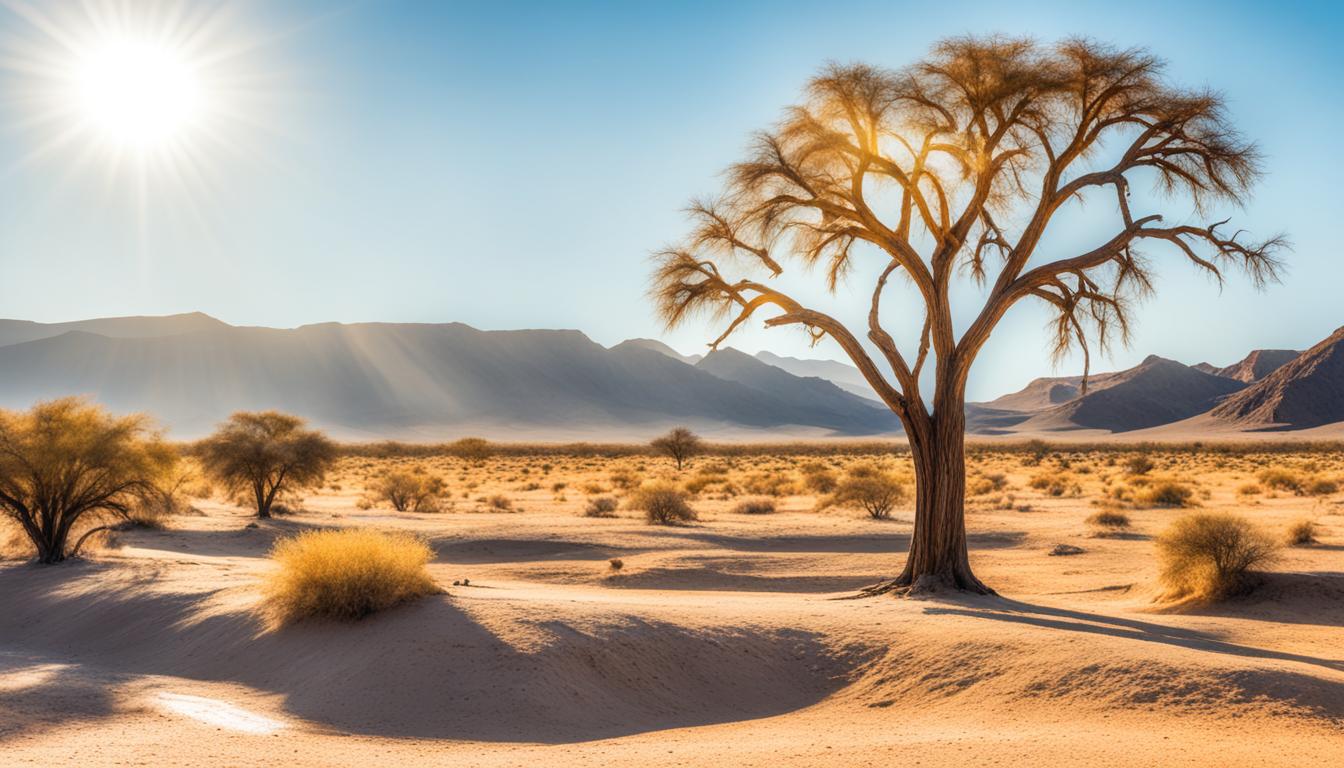Did you know that the best time to visit Namibia is during the dry season when temperatures soar above 70°F and rainfall is minimal? This remarkable African country offers breathtaking landscapes, diverse wildlife, and a unique cultural experience. Let’s embark on a journey to Namibia and discover the ideal time to explore this extraordinary destination.
Imagine standing atop towering sand dunes that glow in a kaleidoscope of vibrant oranges against the backdrop of cobalt skies. Picture vast savannas where majestic elephants roam freely, and sprawling deserts that stretch as far as the eye can see. Namibia is a land of wonders, inviting adventurers, photographers, and nature enthusiasts to immerse themselves in its awe-inspiring beauty.
Meet Sarah, an avid traveler with a profound love for unique landscapes. One summer, she embarked on a journey to Namibia, eager to experience its diverse climate and stunning natural wonders. From the moment she arrived, Sarah was captivated by the otherworldly beauty that unfolded before her.
During her trip, Sarah discovered that the best time to visit Namibia is from July to October. As she explored the country’s renowned national parks, including Etosha, she encountered a plethora of wildlife congregating around waterholes. Zebras, giraffes, lions, and countless other species were drawn together, providing an incredible opportunity for wildlife enthusiasts like Sarah to witness nature’s spectacle up close.
Throughout her journey, Sarah marveled at the diverse landscapes that Namibia had to offer. From the iconic Sossusvlei with its towering sand dunes to the dramatic Fish River Canyon, she experienced ever-changing vistas that left her in awe.
As Sarah’s adventure came to an end, she couldn’t help but reflect on the unique beauty of Namibia. The country’s climate, with its distinct dry and wet seasons, played a significant role in shaping Sarah’s experience. She realized that understanding the monthly climate variations and planning her visit accordingly had made all the difference in her journey of a lifetime.
Key Takeaways:
- The best time to visit Namibia is from July to October when temperatures are above 70°F and rainfall is minimal.
- This period coincides with the dry season, making it ideal for wildlife viewing.
- Plan your trip in advance to make the most of Namibia’s unique landscapes, diverse wildlife, and cultural experiences.
- Consider exploring Namibia’s national parks, such as Etosha, during the peak travel season for an unforgettable wildlife encounter.
- Take advantage of the stunning contrast between orange sand dunes and cobalt skies for breathtaking photography opportunities.
Monthly Climate Guide for Namibia
Planning a trip to Namibia? It’s important to consider the weather conditions during different months to make the most of your visit. Here is a month-by-month guide to help you understand the climate in Namibia:
- January: Mid-summer in Namibia brings hot and humid weather, with temperatures ranging from 86°F to 95°F. Afternoon rain showers are possible, so be prepared for short bursts of precipitation.
- February: Similar to January, February sees slightly increased rainfall. The temperatures remain high, making it a great time for outdoor activities.
- March: The hot and humid weather continues in March, with the possibility of afternoon rain showers. Temperatures remain consistent, providing warm days for exploration.
- April: As the summer months come to an end, temperatures start to cool down, ranging from 75°F to 79°F. Rainfall decreases, making it a good time to visit if you prefer fewer crowds.
- May: May offers mild temperatures around 70°F to 75°F and minimal rainfall. It’s a pleasant time to explore the natural beauty of Namibia.
- June: Winter season begins in Namibia, bringing cold nights and temperatures around 68°F to 72°F. Pack warm clothing for chilly evenings.
- July-August: Winter continues, with sunny days and cold nights. Temperatures range from 68°F to 72°F, providing comfortable conditions for outdoor activities.
- September: September brings warm and sunny weather, with temperatures around 70°F to 75°F. This is a great time for wildlife viewing, as animals gather around waterholes.
- October: Temperatures start to increase in October, ranging from 75°F to 82°F. Rainfall remains minimal, making it an ideal month to explore the diverse landscapes of Namibia.
- November: November brings hot weather with temperatures reaching up to 82°F to 88°F. The scenery is lush and green after the rainy season.
- December: Summer season begins in December, with hot weather prevailing. Temperatures range from 82°F to 91°F, providing warm days for outdoor adventures.
Whether you prefer mild temperatures, dry weather, or want to witness the lush landscapes after the rainy season, Namibia has something to offer throughout the year. Plan your trip accordingly and make the most of your visit to this beautiful country.
Wildlife Viewing in Namibia
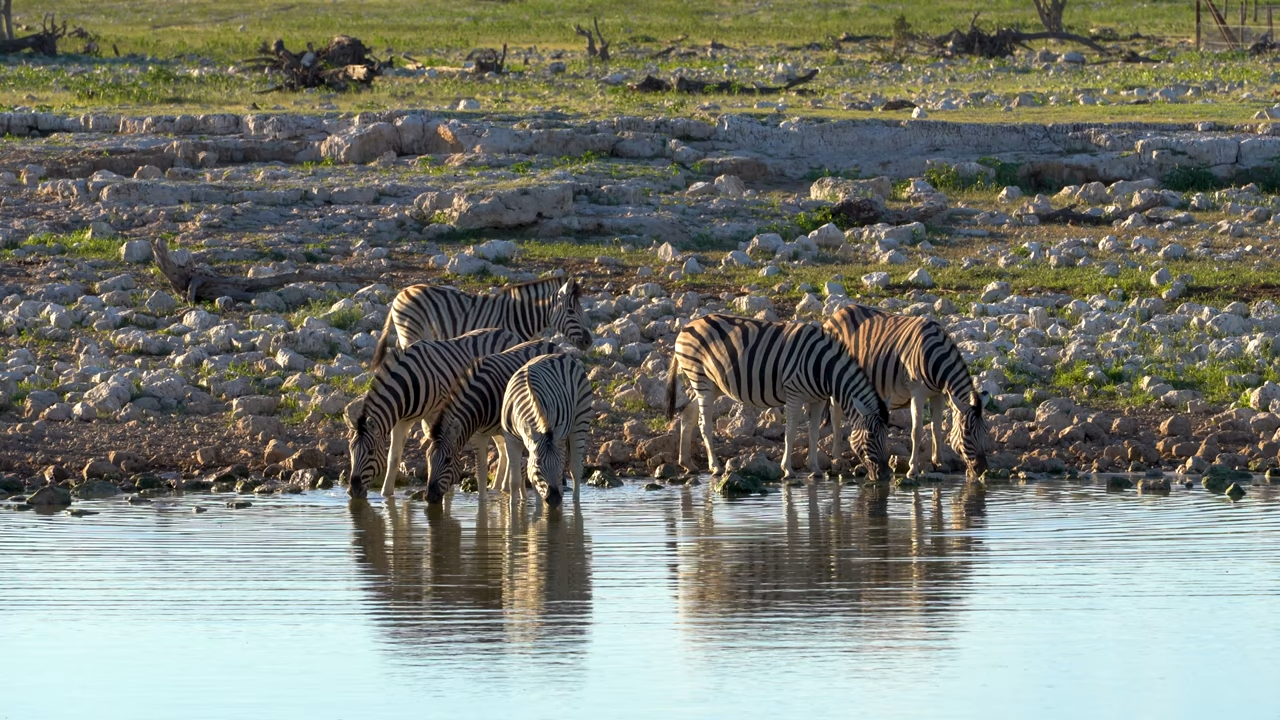
The best time for wildlife viewing in Namibia is from July to October. During this period, the dry season, animals gather around rivers and waterholes, making them easier to spot. The parks do not feel crowded during this time, except for popular destinations like Etosha. September is particularly recommended for game viewing as the limited water sources attract plenty of wildlife. Traveling during this time ensures the best chances of experiencing the rich wildlife of Namibia.
If you’re planning a trip to Namibia, these months offer the ideal time to encounter a diverse array of animals in their natural habitats. The dry season forces wildlife to congregate around water sources, resulting in spectacular sightings. From majestic elephants and graceful giraffes to swift cheetahs and elusive leopards, Namibia’s national parks and reserves are home to a variety of fascinating species.
Experience the Wildlife Spectacle
Embark on thrilling game drives and guided safaris in Etosha National Park, one of Namibia’s premier wildlife destinations. Witness the iconic Etosha Pan, a massive salt pan that attracts an abundance of animals seeking water and sustenance. Keep your eyes peeled for lions, zebras, black rhinos, and an array of bird species.
“The best way to explore Namibia’s wildlife is by venturing into the vast landscapes and connecting with nature on a completely different level.”
The ideal time for a Namibia vacation for wildlife enthusiasts is during these months. You’ll have the opportunity to observe predator-prey interactions, marvel at migratory bird species, and capture breathtaking photographs of wildlife against the stunning backdrop of Namibia’s dramatic landscapes.
Discover Namibia’s Ecosystems
Namibia boasts diverse ecosystems, ranging from the mesmerizing sand dunes of the Namib Desert to the rugged mountains and arid plains of Damaraland. Each region offers unique wildlife encounters and breathtaking scenery.
Month-by-Month Highlights
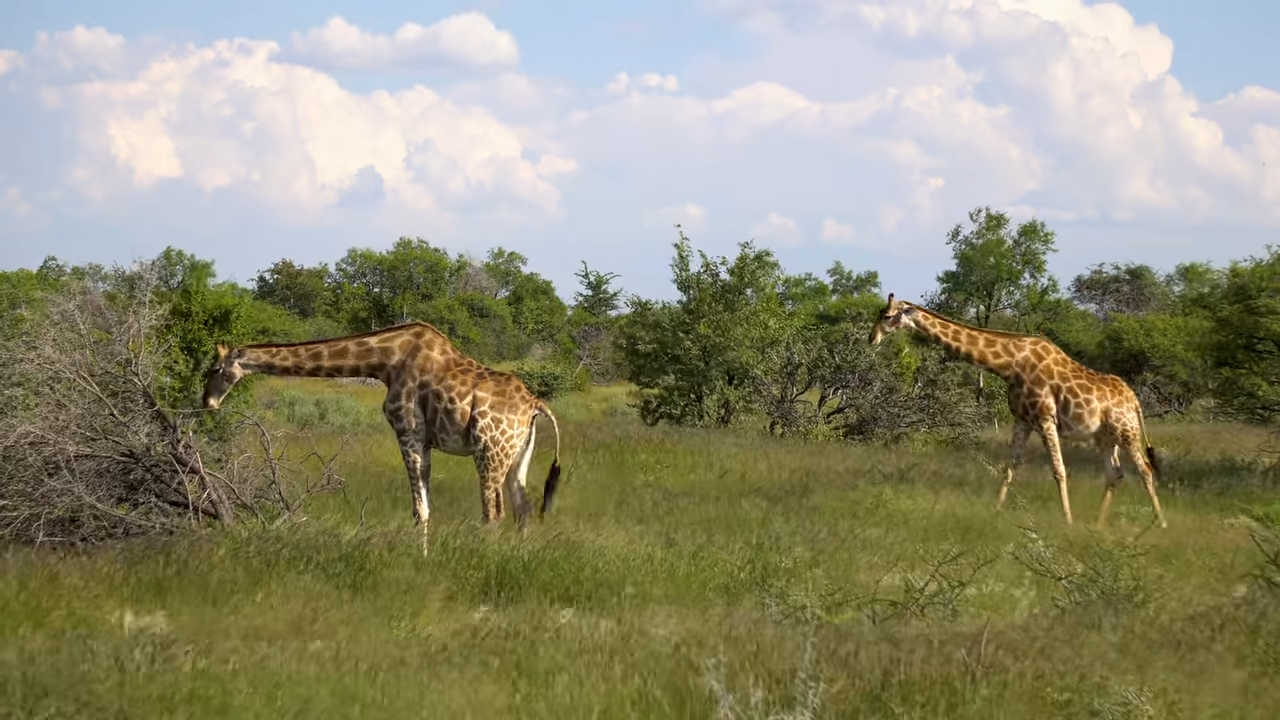
Here’s a brief overview of what you can expect during each of the top months to travel Namibia:
- July: Witness large herds of elephants and buffaloes congregating around waterholes. Spot leopard and cheetah sightings.
- August: Experience the thrill of tracking black rhino in Damaraland.
- September: Capture incredible photographs of wildlife in Etosha against striking Etosha Pan.
- October: Observe fascinating desert-adapted elephants and other unique species in Damaraland and Kaokoland.
In conclusion, if you’re a wildlife enthusiast, the ideal time for a Namibia vacation is from July to October. These months offer unparalleled opportunities to witness the incredible diversity of Namibia’s wildlife, from iconic species to rare and elusive creatures. Whether you’re a photographer, nature lover, or adventurer seeking an unforgettable safari experience, Namibia’s wildlife viewing season calendar provides the perfect guide to plan your dream wildlife expedition.
Seasonal Highlights and Events in Namibia
While planning your trip to Namibia, be sure to take into account the country’s seasonal highlights and events. These specific periods offer unique experiences that can enhance your visit to this stunning destination.
Birdwatching in the Caprivi Strip (November to February)
The Caprivi Strip in Namibia provides an exceptional opportunity for birdwatching enthusiasts. With over 450 species recorded, this region boasts a diverse range of avian life. From November to February, the summer months in Namibia, the area comes alive with colorful and melodic displays as birds grace the skies and treetops. Take your binoculars and camera to capture the beauty of these feathered creatures against the backdrop of the captivating Namibian landscape.
Flamingos Gather (November to February)
If you have a fascination with flamingos, then plan your visit to Namibia between November and February. During this time, large gatherings of flamingos can be spotted in Swakopmund. These elegant and vibrant pink birds create a mesmerizing spectacle as they congregate near the coast. Witnessing these magnificent creatures against the backdrop of Namibia’s natural beauty is an experience you won’t want to miss.
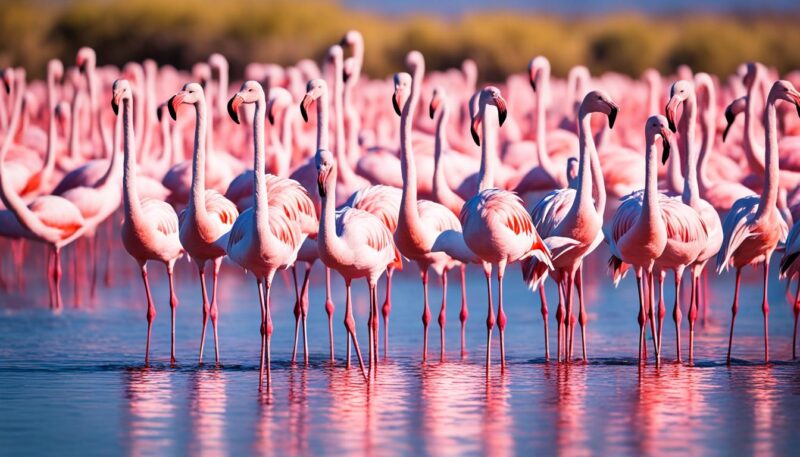
After the Rains (November to April)
Following the rainy season from November to April, Namibia’s landscape undergoes a remarkable transformation. The arid terrain becomes lush and green, painting a picturesque scene. It is during this time that newborn animals can be seen, filling the air with their playful antics. Whether it’s the adorable baby zebras or mischievous warthogs, witnessing these young animals navigating their environment instills a sense of awe and wonder.
Migratory Birds (November to April)
Namibia serves as a temporary home to many migratory bird species between November and April. As they journey across continents, these birds bring with them a delightful symphony of calls and vibrant plumage. This makes it an opportune time for avid birdwatchers to observe a wide variety of species in their natural habitat. Keep your eyes and ears open as you explore Namibia’s diverse ecosystems, and discover the mesmerizing world of migratory birds.
Namibia Climate Guide
When planning a trip to Namibia, understanding the climate patterns in different regions can help you make the most of your experience. Here is a climate guide for various regions in Namibia:
Damaraland
Temperatures in Damaraland range from 68°F to 81°F, offering pleasant weather conditions for outdoor activities. The highest rainfall occurs in March and April, providing a chance to witness the region’s lush landscapes.
Fish River Canyon
Fish River Canyon experiences temperatures ranging from 73°F to 91°F, making it an ideal destination for warmer weather enthusiasts. The highest rainfall is recorded in November and February, offering occasional relief from the arid surroundings.
Mudumu & Nkasa Lupala National Park
With temperatures ranging from 77°F to 91°F, Mudumu & Nkasa Lupala National Park offers a moderate climate throughout the year. The highest rainfall is seen in January and February, enhancing the park’s natural beauty.
Sossusvlei & Sesriem
Sossusvlei & Sesriem experiences temperatures between 68°F and 77°F, creating a pleasant environment for exploring the iconic sand dunes. The highest rainfall occurs in February and March, transforming the desert into a breathtaking landscape.
Southern Kalahari
The Southern Kalahari region boasts temperatures ranging from 70°F to 95°F, making it a popular destination for warm-weather seekers. The highest rainfall is recorded in January and February, bringing life to the arid surroundings.
The Skeleton Coast
The Skeleton Coast offers mild temperatures ranging from 64°F to 75°F throughout the year. The region experiences minimal rainfall, creating a unique environment that showcases the rugged beauty of the Namibian coastline.
Windhoek
As the capital city of Namibia, Windhoek experiences temperatures ranging from 72°F to 90°F. The highest rainfall occurs in January and February, providing relief from the hotter days and contributing to the city’s lush greenery.
Understanding the climate patterns in different regions of Namibia can help you plan your activities and pack accordingly. Whether you’re looking for warm weather adventures, desert landscapes, or a mild coastal experience, Namibia offers diverse climates to suit every traveler’s preferences.
Namibia Safaris and Travel Ideas
If you’re looking for an unforgettable adventure in Namibia, there are a variety of safari experiences and travel ideas to choose from. Whether you prefer a self-drive tour or a guided expedition, Namibia has something to offer for everyone.
“Namibia is a place of extraordinary beauty and diversity. From the iconic orange sand dunes of the Namib Desert to the wildlife-rich national parks, there is no shortage of incredible sights to explore.” – Travel Expert
1. Northern Namibia self-drive safari to Victoria Falls
Embark on a self-drive safari through northern Namibia, where you can explore the country’s highlights at your own pace. Start your journey in Windhoek and make your way through the captivating landscapes of Damaraland, Etosha National Park, and the lush Zambezi Region. Finally, reach the grand finale – Victoria Falls, one of the Seven Natural Wonders of the World.
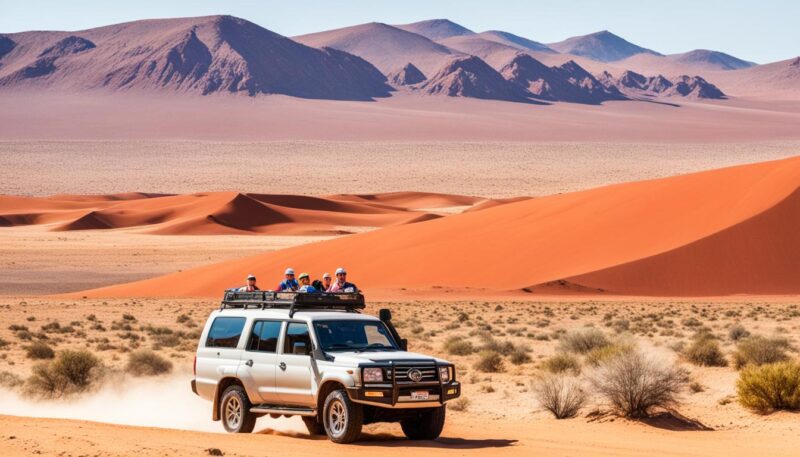
2. Namibia’s highlights by private escorted tour
For a more personalized and in-depth experience, opt for a private escorted tour of Namibia’s highlights. Let knowledgeable guides lead you through the country’s diverse regions, ensuring you don’t miss any of the must-see attractions. This tailored approach allows for flexibility and allows you to immerse yourself in the rich culture and natural wonders of Namibia.
3. Classic Namibia self-drive safari
Experience the iconic landscapes of Namibia on a classic self-drive safari. Journey through the vast expanses of the Namib Desert, marvel at the towering sand dunes of Sossusvlei, and visit the majestic Fish River Canyon. This self-guided adventure allows you to set your own pace and discover the hidden treasures of the country.
4. 3-Day Etosha Guided Camping Safari
Join a guided camping safari in Etosha National Park for an immersive wildlife experience. Spend three days exploring the abundant plains of Etosha, renowned for its thriving wildlife populations. From spectacular game drives to sightings of majestic elephants, lions, and rhinos, this guided safari offers an up-close encounter with Namibia’s incredible wildlife.
Whichever safari or travel idea you choose, Namibia promises awe-inspiring landscapes, abundant wildlife, and unforgettable experiences. Plan your trip to Namibia and embark on a journey of a lifetime.
Conclusion
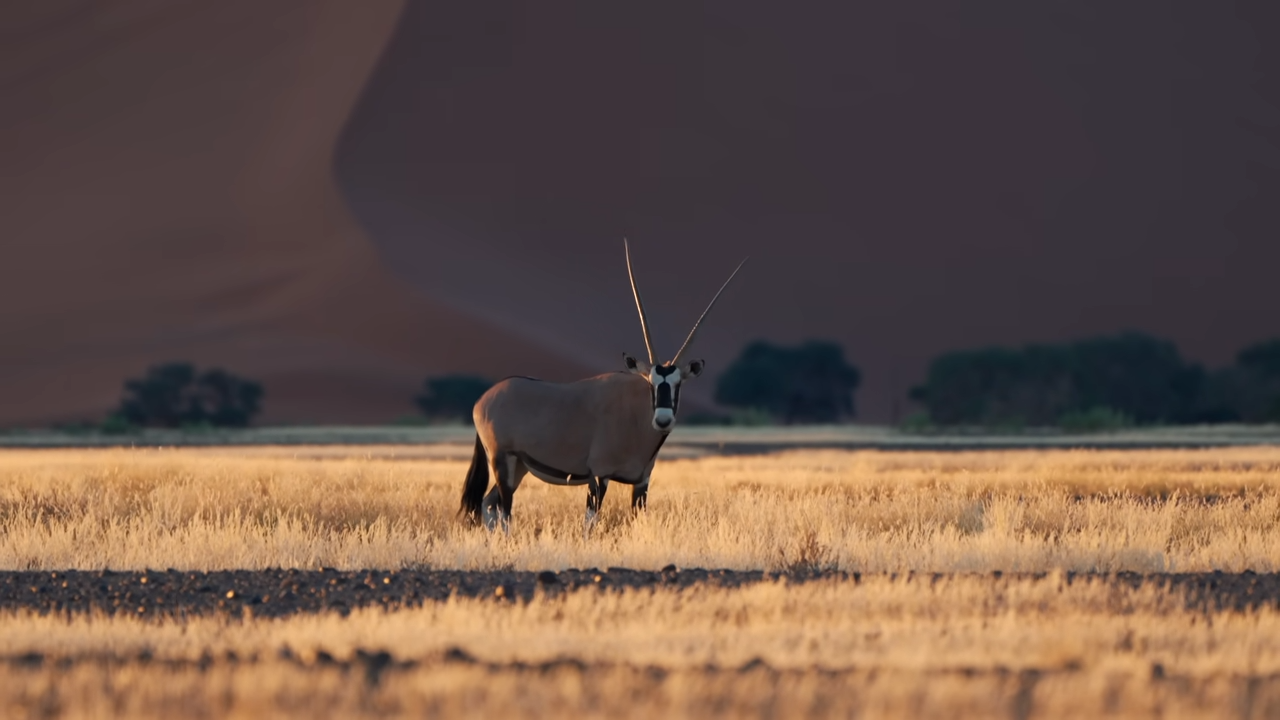
Planning your trip to Namibia requires careful consideration of the weather and wildlife viewing opportunities throughout the different months. The best time to visit Namibia is from July to October, when you can enjoy pleasant temperatures, minimal rainfall, and incredible wildlife experiences. During this period, you can embark on an unforgettable adventure in Namibia’s stunning landscapes.
However, each season in Namibia has its own unique highlights, so it’s essential to think about what you want to experience during your trip. Whether you’re interested in birdwatching, witnessing flamingo gatherings, or exploring the green landscapes after the rains, there’s something for everyone in Namibia.
By gathering the right information and planning ahead, you can choose the best time to visit Namibia and make the most of your journey. With Namibia travel tips and a monthly climate guide, you’ll have a complete understanding of the country’s weather patterns and can tailor your itinerary accordingly.
If you liked this article, be sure to also check out our article about: Explore Zimbabwe – Top Expert Recommendation
FAQ
When is the best time to visit Namibia?
The best time to visit Namibia is from July to October. These months offer pleasant temperatures, minimal rainfall, and the peak travel season for wildlife viewing.
What is the climate like in Namibia throughout the year?
Namibia has a predominantly dry climate, with temperatures ranging from hot in the summer months (December to February) to cooler in the winter months (June to August). The country experiences minimal rainfall, except for certain regions during specific months.
Which months are recommended for wildlife viewing in Namibia?
The best months for wildlife viewing in Namibia are from July to October. During this time, the dry season, animals gather around rivers and waterholes, making them easier to spot. September is particularly recommended for game viewing.
What are some seasonal highlights and events in Namibia?
Some seasonal highlights and events in Namibia include birdwatching in the Caprivi Strip from November to February, witnessing gatherings of flamingos in Swakopmund from November to February, and spotting newborn animals and migratory birds from November to April.
What is the climate like in different regions of Namibia?
The climate in different regions of Namibia varies. Damaraland has temperatures ranging from 68°F to 81°F and experiences the highest rainfall in March and April. Fish River Canyon has temperatures ranging from 73°F to 91°F and experiences the highest rainfall in November and February.
Mudumu & Nkasa Lupala National Park has temperatures ranging from 77°F to 91°F and experiences the highest rainfall in January and February. Sossusvlei & Sesriem has temperatures ranging from 68°F to 77°F and experiences the highest rainfall in February and March.
Southern Kalahari has temperatures ranging from 70°F to 95°F and experiences the highest rainfall in January and February. The Skeleton Coast has temperatures ranging from 64°F to 75°F and experiences little rainfall throughout the year. Windhoek has temperatures ranging from 72°F to 90°F and experiences the highest rainfall in January and February.
What are some popular safari and travel ideas in Namibia?
Some popular safari and travel ideas in Namibia include a Northern Namibia self-drive safari to Victoria Falls, exploring Namibia’s highlights by a private escorted tour, experiencing a classic Namibia self-drive safari, and joining a guided camping safari to Etosha National Park.
